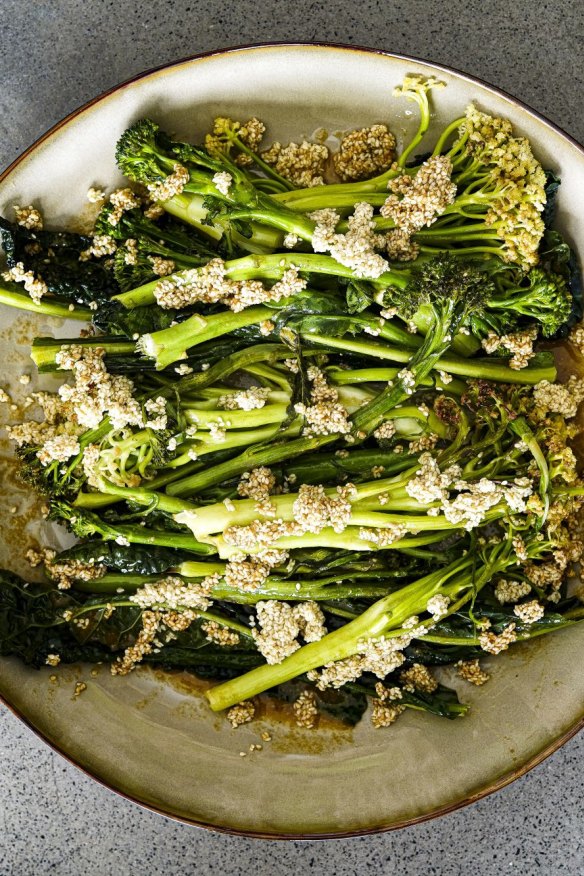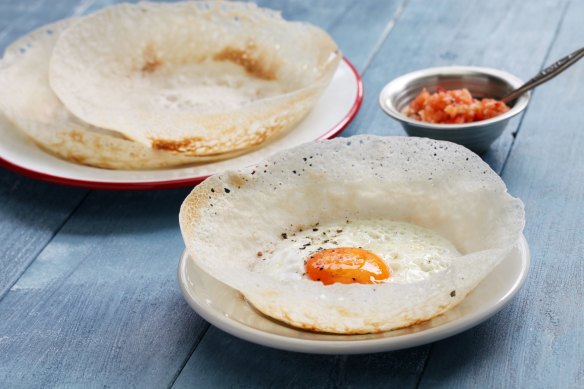11 modern menu terms you probably don’t know (but it will impress your plus one if you do)
Brush up on modern food lingo and master this glossary of current menu terms and trends.
Pass the Coravin, I’ve just ordered the gueridon kinilaw with pearl meat and typhoon-style fioretto. Say whaaat? Dining out these days is a minefield of unusual terms, ingredients and techniques. Keep up, dearie, you need to be in the know.

Coravin: A wine preservation system that allows wine to be poured from a bottle without removing the cork (a very fine needle is employed) and without exposing the wine to oxygen. Sommeliers love it because they can now offer their finest vintages by the glass.

Fioretto: A hybrid of cauliflower and broccoli, the long slender branches are topped with clusters of white florets that have a lovely nutty flavour.
Gilda: The bar snack du jour is a fat green olive, pickled guindilla pepper and anchovy threaded onto a toothpick, which, taken in one strong, salty bite, explodes in the mouth. Best taken with a Spanish sherry, vermut or beer for the full effect.
Gueridon: Fast coming back into fashion, gueridon is tableside service in which waitstaff carve, serve or cook the food from a trolley. Currently popular: steak tartare, Caesar salad and whole ducks and steaks.
Hasselback: A potato that has been very finely sliced crosswise, but left still joined at the bottom. When baked, the slices open up, so you get a super-crisp top and creamy centre. Beware, the term can apply to anything from avocado to eggplant.

Hoppers: Sri Lanka’s favourite street food, hoppers are lacy, sourish crepes made from fermented rice flour and coconut milk. They’re baked in a bowl-shaped pan, often with a runny egg at the bottom, and served with sambols and curries.
Kinilaw: You’ve had ceviche, now get ready for kinilaw, its Filipino equivalent (kilaw means “to cook in sourness”). Bright, tart and punchy, it’s most often done with raw fish, vinegar and sour fruit such as green mango or calamansi limes.
Monaka: A particularly charming form of wagashi, traditional Japanese sweets. Two thin, crisp, moulded wafers (with the texture of an ice-cream cone) sandwich sweet red bean paste, mochi or ice-cream. It would be too beautiful to eat, if anything was too beautiful to eat.
Pearl meat: Technically the large ear-shaped adductor muscle of the South Sea pearl oyster, opalescent pearl meat is a rare and expensive delicacy, usually eaten raw.
Typhoon-style: Named for the deep-fried seafood cooked by fishing folk when holed up in Hong Kong’s typhoon shelter. Expect anything typhoon-style to come showered with a crunchy, spicy, sweet mix of fried garlic, chilli, black beans and spring onions.
Yuzu: A fragrant, golden-skinned Japanese citrus fruit (now grown in Australia). Tart and zesty, it’s loved for its clean, sharp acidity. Look out also for yuzu kosho, a salty, citrusy chilli paste that will blow your mind.
The best recipes from Australia's leading chefs straight to your inbox.
Sign up